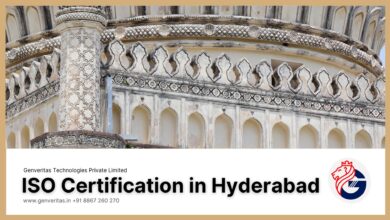Requirements of ISO 9001 | Genveritas Technologies

ISO 9001:2015 is the Quality Management System, known as the most implemented and Certified ISO System in the world. More than 1 Crore+ businesses officially certified with ISO 9001:2015 Management System standards.
In QMS, the important action or part of the system is to define and document the processes of your business. If something is not documented, then it doesn’t help you to meet the quality vision and mission of your business. So, it has to note that documented system is the core action for your business success and provides you the insights into the happenings in the Business system. Organizations that follow the guidelines as per the standard and documented well then it is considered as the Systematic QMS of the Organization.
Most Businesses or organizations fail to meet the documented system of QMS, because of lack of resources, lack of dedication, or lack of the management vision. One should understand that the documented system gives additional strength to the operational power of your business.
What are the requirements of QMS and why is it important?
Requirements of ISO 9001:2015, a Quality Management system consists of the guidelines and procedures that have to be written and controlled within the Organization. The defined processes and documented procedures are the key features, which prevent the accidents and incidents which cause failures in your business. QMS does not only guide you to document the processes and procedures, but also tells you to follow the guidelines and documented system, this helps you to meet your client’s requirements too, by satisfying the expectations of all stakeholders.
When it comes to the part of the documented system, the following are the requirements of ISO Standard and has to maintained and followed by an organization,
- Context of the Organization
- Leadership
- Planning
- Support
- Operation
- Performance Evaluation
- Continual Improvement
Before starting the process of implementation, the organization should understand the mentioned requirements above, also called clauses of QMS.
Context of the Organization;
For the requirement of Context of the Organization, you define the purpose of your Quality Management System along with the strategic direction of your business.
- Determine the factors that affect your QMS – Expectations, interests, and issues both internal and external.
- Understand the expectations of stakeholders – Internal & External – Such as employees, vendors, customers, or other interested parties.
Leadership;
Requirements of Leadership are defined in Clause-5 in QMS. Top Management has to define and identify the responsible resources to achieve,
- Creation of Quality Management System
- Documentation of Quality Policies and Objectives.
- Effective communication of quality objectives within the organization.
Planning;
As Part of Planning requirements, one has to apply risk-based thinking to identify the opportunities and risks that affect the quality management system and define the measures to apply. So,
- Identify the Potential risk, severity, and occurrences and document them.
- Plan for reduction and prevention of undesired incidents.
Support;
The QMS requires that your organization must provide supports that help you to achieve the objectives of your Quality Management System. The Supports that includes,
- Providing the good infrastructure,
- Providing the Manpower resources,
- Providing the tools, pieces of machinery, software, or required equipment.
- Providing the Safer and Secured Environment.
Operations;
Clause 8 of the QMS is Operations, which defined the Core operations or work of your business. So, applying the defined processes, policies, and objectives as a part of your services or products. As daily operations, one has to collect the information of applied actions, effectiveness, and feedback, this includes,
- Monitoring, inspecting, and testing of the processes to ensure Quality products or services.
- Effectiveness of Checklists to meet the better outcomes of your services/products.
- Collection and preserve the records of outcomes.
Performance Evaluation;
Once the defined policies, procedures, and objectives are implemented and applied, clause 9 defines the evaluation of performance. In order to evaluate the performance,
- Ensure that the Outcomes meet the objectives of your QMS.
- Comparing the results and with expectations.
Continual Improvement;
Clause-10, the Continual Improvement guides you to prepare for the future and expanding the opportunities to improve further. With the guidance of Top Management & suggestions, the QMS system tells you to improve the services/products to meet the market/customer expectations. Increasing the capabilities of the system, the organization sets the new goals & objectives and applies the QMS system to improve further.
In general, the requirements of a Quality Management System are,
- Quality Manual
- Quality Objectives
- Policies
- Procedures
- Work Instructions
- Roles and Responsibilities
- Checklists & Forms
- Records and Reports.
Conclusion
For a successful and effective Quality Management System, Top Management (Leadership) has to communicate their vision (Organizational) to all the employees and make them understand the importance of QMS Implementation. This makes the internal system more robust to meet the objectives of QMS and standardization in your Organizational operations. Hence, training, communication, and infrastructure play a critical role in your organization’s planning, support, and operations.
For more information about ISO Certification, requirements and implementation, Feel free to contact us.
M: 8867 260 270 e: support@genveritas.in w: www.genveritas.in





